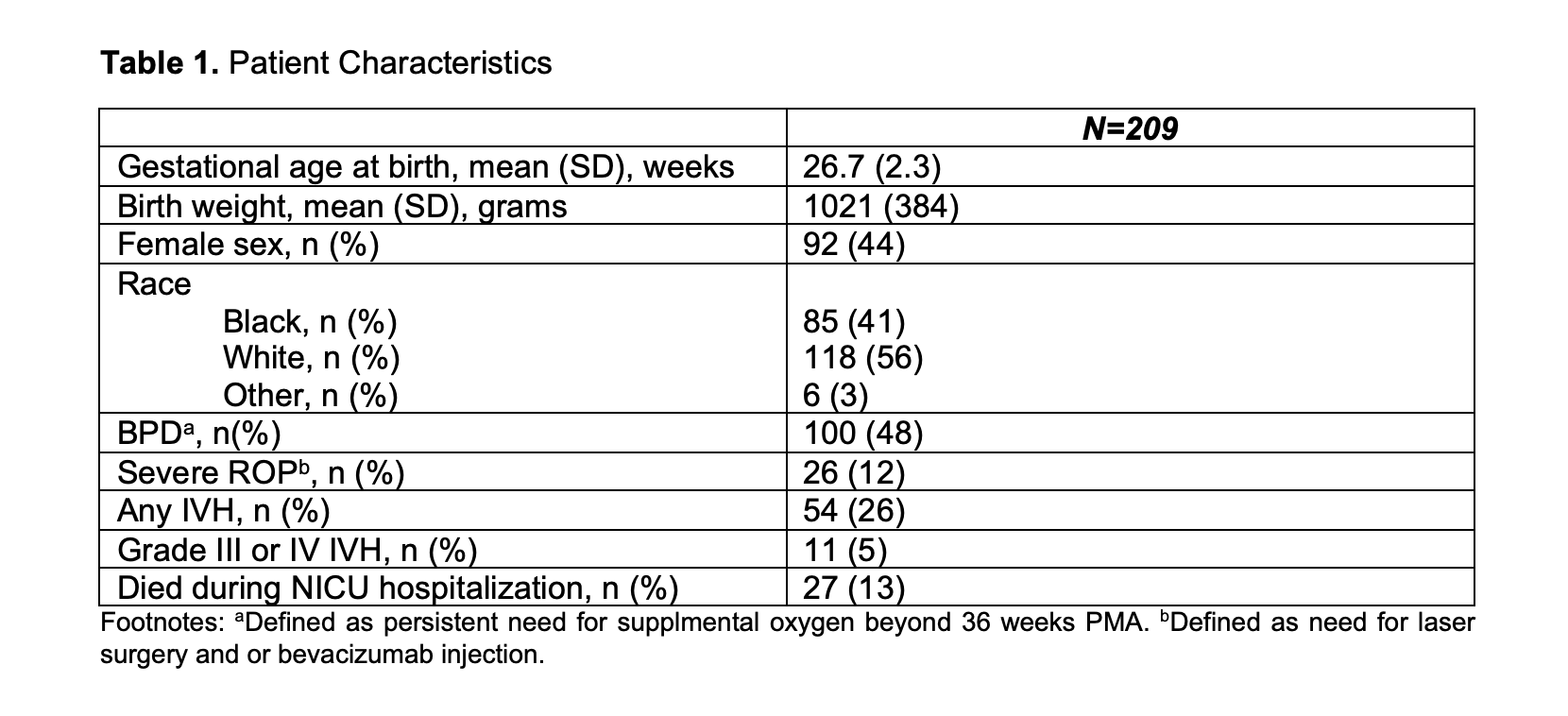Neonatal Neurology: Clinical Research
Neonatal Neurology 6: Clinical 6
123 - Intermittent cerebral hypoxia events are common in preterm infants and increase with postnatal age and IVH
Publication Number: 123.338

Zachary A. Vesoulis, MD MSCI (he/him/his)
Assistant Professor
Washington University School of Medicine
St. Louis, Missouri, United States
Presenting Author(s)
Background: Very low birthweight (VLBW) infants are at increased risk for brain injury. Cardiorespiratory instability is common in VLBW infants and leads to frequent desaturation events. Cerebral autoregulation protects the brain during periods of decreased perfusion; however, autoregulation is impaired in prematurity and may leave the brain vulnerable to intermittent hypoxic events.
Objective:
To identify the frequency and duration of intermittent cerebral hypoxia (ICH) events over the first 60 days of NICU hospitalization for VLBW infants with and without IVH.
Design/Methods:
Preterm infants born ≤ 32 weeks gestation were prospectively enrolled in a longitudinal NIRS monitoring study. Infants underwent daily cerebral NIRS and SpO2 monitoring for 2 weeks, every other day for 2 weeks, then weekly until 36 weeks corrected age. Goal monitoring time was 4-6 hours per session.
Recordings underwent simple preprocessing to remove missing or zero values. Those recordings missing >25% of NIRS measurements were excluded. An open-source desaturation detection algorithm was modified to identify all events where cerebral saturation was < 67% for more than 10 seconds (Figure 1). The normalized daily count of desaturation events and event duration were measured for all recordings. Events were classified as overt (occurring with systemic desaturation, SpO2 < 90%) or occult (SpO2 ≥ 90% during event).
Results:
A total of 1616 recordings from 209 infants were made with a median length of 5.1 hours, yielding a total of 20.7 million NIRS measurements. Patient characteristics are shown in Table 1.
The frequency of intermittent cerebral hypoxia events increased over the first 60 days, from a median of 32 events/day at birth to peak of 52 events/day at 49 days of age (Figure 2). The median ICH duration remained stable at 20 seconds/event (IQR 10-38 seconds) throughout this period, with a median cerebral saturation nadir of 63.5%. Overall, 56% of ICH events were occult (SpO2 ≥ 90% during event).
Infants with IVH had a greater median number of ICH events/day (41 vs 53.5, p < 0.01), and a slightly longer median ICH duration (23 vs. 20 seconds, p < 0.01). There was no difference in desaturation event nadir between IVH and no IVH groups (64 vs 63.5%, p=0.61). A greater proportion of occult ICH events occurred in infants without IVH (67 vs. 48%, p < 0.01).
Conclusion(s):
VLBW infants experience frequent episodes of cerebral hypoxia approximately 20 seconds in length, only half of which are associated with systemic desaturation. Infants with IVH of any grade experience more ICH events, but they are less likely to be occult.
.png)
.png)
